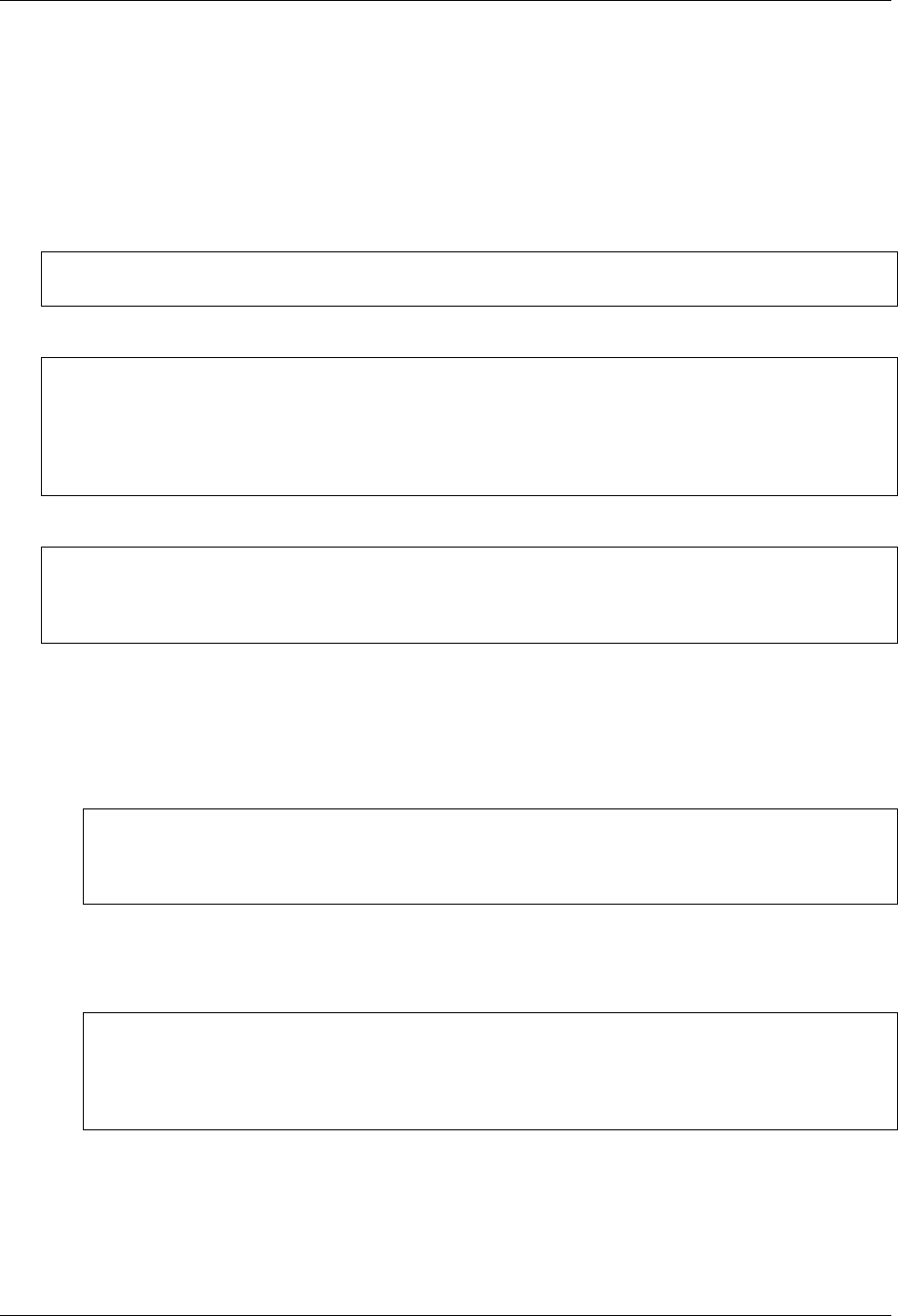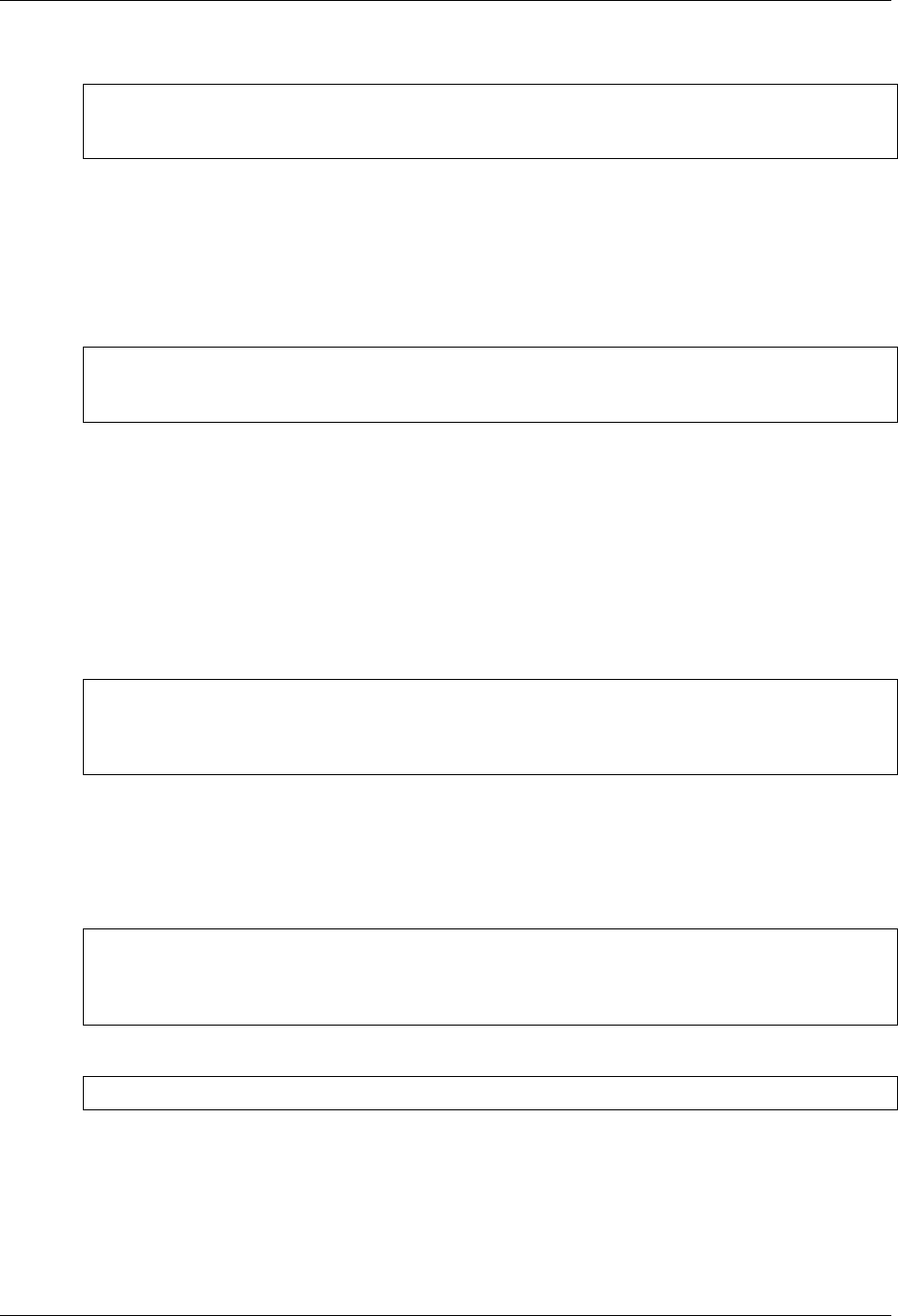
Flask-OAuthlib Documentation
Release 0.9.5
Hsiaoming Yang
Oct 10, 2019

Contents
1 Features 3
2 User’s Guide 5
2.1 Introduction . . . . . . . . . . . . . . . . . . . . . . . . . . . . . . . . . . . . . . . . . . . . . . . 5
2.2 Installation . . . . . . . . . . . . . . . . . . . . . . . . . . . . . . . . . . . . . . . . . . . . . . . . 6
2.3 Client . . . . . . . . . . . . . . . . . . . . . . . . . . . . . . . . . . . . . . . . . . . . . . . . . . . 7
2.4 OAuth1 Server . . . . . . . . . . . . . . . . . . . . . . . . . . . . . . . . . . . . . . . . . . . . . . 12
2.5 OAuth2 Server . . . . . . . . . . . . . . . . . . . . . . . . . . . . . . . . . . . . . . . . . . . . . . 20
2.6 Additional Features . . . . . . . . . . . . . . . . . . . . . . . . . . . . . . . . . . . . . . . . . . . 29
3 API Documentation 33
3.1 Developer Interface . . . . . . . . . . . . . . . . . . . . . . . . . . . . . . . . . . . . . . . . . . . 33
4 Additional Notes 55
4.1 Contributing . . . . . . . . . . . . . . . . . . . . . . . . . . . . . . . . . . . . . . . . . . . . . . . 55
4.2 Changelog . . . . . . . . . . . . . . . . . . . . . . . . . . . . . . . . . . . . . . . . . . . . . . . . 56
4.3 Authors . . . . . . . . . . . . . . . . . . . . . . . . . . . . . . . . . . . . . . . . . . . . . . . . . . 61
Python Module Index 63
Index 65
i

ii

Flask-OAuthlib Documentation, Release 0.9.5
Flask-OAuthlib is designed to be a replacement for Flask-OAuth. It depends on oauthlib.
The client part of Flask-OAuthlib shares the same API as Flask-OAuth, which is pretty and simple.
Warning: Please use https://github.com/lepture/authlib instead.
Contents 1

Flask-OAuthlib Documentation, Release 0.9.5
2 Contents

CHAPTER 1
Features
• Support for OAuth 1.0a, 1.0, 1.1, OAuth2 client
• Friendly API (same as Flask-OAuth)
• Direct integration with Flask
• Basic support for remote method invocation of RESTful APIs
• Support OAuth1 provider with HMAC and RSA signature
• Support OAuth2 provider with Bearer token
3

Flask-OAuthlib Documentation, Release 0.9.5
4 Chapter 1. Features

CHAPTER 2
User’s Guide
This part of the documentation, which is mostly prose, begins with some background information about Flask-
OAuthlib, then focuses on step-by-step instructions for getting the most out of Flask-OAuthlib
2.1 Introduction
Flask-OAuthlib is designed to be a replacement for Flask-OAuth. It depends on oauthlib.
2.1.1 Why
No, you should not use this library any more. PLEASE SWITCH to Authlib instead.
Find out documentation for:
1. Flask OAuth Client
2. Flask OAuth 1.0 Provider
3. Flask OAuth 2.0 Provider
2.1.2 License
A large number of open source projects in Python are BSD Licensed, and Flask-OAuthlib is released under BSD
License too.
Copyright (c) 2013 - 2014, Hsiaoming Yang.
All rights reserved.
Redistribution and use in source and binary forms, with or without modification, are permitted provided that the
following conditions are met:
• Redistributions of source code must retain the above copyright notice, this list of conditions and the following
disclaimer.
5

Flask-OAuthlib Documentation, Release 0.9.5
• Redistributions in binary form must reproduce the above copyright notice, this list of conditions and the follow-
ing disclaimer in the documentation and/or other materials provided with the distribution.
• Neither the name of flask-oauthlib nor the names of its contributors may be used to endorse or promote products
derived from this software without specific prior written permission.
THIS SOFTWARE IS PROVIDED BY THE COPYRIGHT HOLDERS AND CONTRIBUTORS “AS IS” AND ANY
EXPRESS OR IMPLIED WARRANTIES, INCLUDING, BUT NOT LIMITED TO, THE IMPLIED WARRANTIES
OF MERCHANTABILITY AND FITNESS FOR A PARTICULAR PURPOSE ARE DISCLAIMED. IN NO EVENT
SHALL THE COPYRIGHT OWNER OR CONTRIBUTORS BE LIABLE FOR ANY DIRECT, INDIRECT, IN-
CIDENTAL, SPECIAL, EXEMPLARY, OR CONSEQUENTIAL DAMAGES (INCLUDING, BUT NOT LIMITED
TO, PROCUREMENT OF SUBSTITUTE GOODS OR SERVICES; LOSS OF USE, DATA, OR PROFITS; OR BUSI-
NESS INTERRUPTION) HOWEVER CAUSED AND ON ANY THEORY OF LIABILITY, WHETHER IN CON-
TRACT, STRICT LIABILITY, OR TORT (INCLUDING NEGLIGENCE OR OTHERWISE) ARISING IN ANY
WAY OUT OF THE USE OF THIS SOFTWARE, EVEN IF ADVISED OF THE POSSIBILITY OF SUCH DAM-
AGE.
2.2 Installation
This part of the documentation covers the installation of Flask-OAuthlib.
2.2.1 Pip
Installing Flask-OAuthlib is simple with pip:
$ pip install Flask-OAuthlib
2.2.2 Cheeseshop Mirror
If the Cheeseshop is down, you can also install Flask-OAuthlib from one of the mirrors. Crate.io is one of them:
$ pip install -i http://simple.crate.io/ Flask-OAuthlib
2.2.3 Get the Code
Flask-OAuthlib is actively developed on GitHub, where the code is always available.
You can either clone the public repository:
git clone git://github.com/lepture/flask-oauthlib.git
Download the tarball:
$ curl -OL https://github.com/lepture/flask-oauthlib/tarball/master
Or, download the zipball:
$ curl -OL https://github.com/lepture/flask-oauthlib/zipball/master
Once you have a copy of the source, you can embed it in your Python package, or install it into your site-packages
easily:
6 Chapter 2. User’s Guide

Flask-OAuthlib Documentation, Release 0.9.5
$ python setup.py install
2.3 Client
Note: You SHOULD read Flask OAuth Client documentation.
The client part keeps the same API as Flask-OAuth. The only changes are the imports:
from flask_oauthlib.client import OAuth
Attention: If you are testing the provider and the client locally, do not make them start listening on the same
address because they will override the session of each other leading to strange bugs. eg: start the provider listening
on 127.0.0.1:4000 and client listening on localhost:4000 to avoid this problem.
2.3.1 OAuth1 Client
The difference between OAuth1 and OAuth2 in the configuration is request_token_url. In OAuth1 it is required,
in OAuth2 it should be None.
To connect to a remote application create a OAuth object and register a remote application on it using the
remote_app() method:
from flask_oauthlib.client import OAuth
oauth = OAuth()
the_remote_app = oauth.remote_app('the remote app',
...
)
A remote application must define several URLs required by the OAuth machinery:
• request_token_url
• access_token_url
• authorize_url
Additionally the application should define an issued consumer_key and consumer_secret.
You can find these values by registering your application with the remote application you want to connect with.
Additionally you can provide a base_url that is prefixed to all relative URLs used in the remote app.
For Twitter the setup would look like this:
twitter = oauth.remote_app('twitter',
base_url='https://api.twitter.com/1/',
request_token_url='https://api.twitter.com/oauth/request_token',
access_token_url='https://api.twitter.com/oauth/access_token',
authorize_url='https://api.twitter.com/oauth/authenticate',
consumer_key='<your key here>',
consumer_secret='<your secret here>'
)
2.3. Client 7

Flask-OAuthlib Documentation, Release 0.9.5
Now that the application is created one can start using the OAuth system. One thing is missing: the tokengetter. OAuth
uses a token and a secret to figure out who is connecting to the remote application. After authentication/authorization
this information is passed to a function on your side and it is your responsibility to remember it.
The following rules apply:
• It’s your responsibility to store that information somewhere
• That information lives for as long as the user did not revoke the access for your application on the remote
application. If it was revoked and the user re-enabled the application you will get different keys, so if you store
them in the database don’t forget to check if they changed in the authorization callback.
• During the authorization handshake a temporary token and secret are issued. Your tokengetter is not used during
that period.
For a simple test application, storing that information in the session is probably sufficient:
from flask import session
@twitter.tokengetter
def get_twitter_token(token=None):
return session.get('twitter_token')
If the token does not exist, the function must return None, and otherwise return a tuple in the form (token,
secret). The function might also be passed a token parameter. This is user defined and can be used to indicate
another token. Imagine for instance you want to support user and application tokens or different tokens for the same
user.
The name of the token can be passed to to the request() function.
2.3.2 Signing in / Authorizing
To sign in with Twitter or link a user account with a remote Twitter user, simply call into authorize() and pass it
the URL that the user should be redirected back to. For example:
@app.route('/login')
def login():
return twitter.authorize(callback=url_for('oauth_authorized',
next=request.args.get('next') or request.referrer or None))
If the application redirects back, the remote application can fetch all relevant information in the oauth_authorized
function with authorized_response():
from flask import redirect
@app.route('/oauth-authorized')
def oauth_authorized():
next_url = request.args.get('next') or url_for('index')
resp = twitter.authorized_response()
if resp is None:
flash(u'You denied the request to sign in.')
return redirect(next_url)
session['twitter_token'] = (
resp['oauth_token'],
resp['oauth_token_secret']
)
session['twitter_user'] = resp['screen_name']
(continues on next page)
8 Chapter 2. User’s Guide

Flask-OAuthlib Documentation, Release 0.9.5
(continued from previous page)
flash('You were signed in as %s' % resp['screen_name'])
return redirect(next_url)
We store the token and the associated secret in the session so that the tokengetter can return it. Additionally, we also
store the Twitter username that was sent back to us so that we can later display it to the user. In larger applications it is
recommended to store satellite information in a database instead to ease debugging and more easily handle additional
information associated with the user.
2.3.3 Facebook OAuth
For Facebook the flow is very similar to Twitter or other OAuth systems but there is a small difference. You’re not
using the request_token_url at all and you need to provide a scope in the request_token_params:
facebook = oauth.remote_app('facebook',
base_url='https://graph.facebook.com/',
request_token_url=None,
access_token_url='/oauth/access_token',
authorize_url='https://www.facebook.com/dialog/oauth',
consumer_key=FACEBOOK_APP_ID,
consumer_secret=FACEBOOK_APP_SECRET,
request_token_params={'scope': 'email'}
)
Furthermore the callback is mandatory for the call to authorize() and has to match the base URL that was specified
in the Facebook application control panel. For development you can set it to localhost:5000.
The APP_ID and APP_SECRET can be retrieved from the Facebook app control panel. If you don’t have an application
registered yet you can do this at facebook.com/developers.
2.3.4 Invoking Remote Methods
Now the user is signed in, but you probably want to use OAuth to call protected remote API methods and not just
sign in. For that, the remote application object provides a request() method that can request information from
an OAuth protected resource. Additionally there are shortcuts like get() or post() to request data with a certain
HTTP method.
For example to create a new tweet you would call into the Twitter application as follows:
resp = twitter.post('statuses/update.json', data={
'status': 'The text we want to tweet'
})
if resp.status == 403:
flash('Your tweet was too long.')
else:
flash('Successfully tweeted your tweet (ID: #%s)' % resp.data['id'])
Or to display the users’ feed we can do something like this:
resp = twitter.get('statuses/home_timeline.json')
if resp.status == 200:
tweets = resp.data
else:
tweets = None
(continues on next page)
2.3. Client 9

Flask-OAuthlib Documentation, Release 0.9.5
(continued from previous page)
flash('Unable to load tweets from Twitter. Maybe out of '
'API calls or Twitter is overloaded.')
Flask-OAuthlib will do its best to send data encoded in the right format to the server and to decode it when it comes
back. Incoming data is encoded based on the mimetype the server sent and is stored in the data attribute. For outgoing
data a default of 'urlencode' is assumed. When a different format is needed, one can specify it with the format
parameter. The following formats are supported:
Outgoing:
• 'urlencode' - form encoded data (GET as URL and POST/PUT as request body)
• 'json' - JSON encoded data (POST/PUT as request body)
Incoming
• 'urlencode' - stored as flat unicode dictionary
• 'json' - decoded with JSON rules, most likely a dictionary
• 'xml' - stored as elementtree element
Unknown incoming data is stored as a string. If outgoing data of a different format is needed, content_type should be
specified instead and the data provided should be an encoded string.
Find the OAuth1 client example at twitter.py.
2.3.5 OAuth2 Client
Find the OAuth2 client example at github.py.
New in version 0.4.2.
Request state parameters in authorization can be a function:
from werkzeug import security
remote = oauth.remote_app(
request_token_params={
'state': lambda: security.gen_salt(10)
}
)
2.3.6 Lazy Configuration
New in version 0.3.0.
When creating an open source project, we need to keep our consumer key and consumer secret secret. We usually
keep them in a config file, and don’t keep track of the config in the version control.
Client of Flask-OAuthlib has a mechanism for you to lazy load your configuration from your Flask config object:
from flask_oauthlib.client import OAuth
oauth = OAuth()
twitter = oauth.remote_app(
'twitter',
base_url='https://api.twitter.com/1/',
(continues on next page)
10 Chapter 2. User’s Guide

Flask-OAuthlib Documentation, Release 0.9.5
(continued from previous page)
request_token_url='https://api.twitter.com/oauth/request_token',
access_token_url='https://api.twitter.com/oauth/access_token',
authorize_url='https://api.twitter.com/oauth/authenticate',
app_key='TWITTER'
)
At this moment, we didn’t put the consumer_key and consumer_secret in the remote_app, instead, we set
a app_key. It will load from Flask config by the key TWITTER, the configuration looks like:
app.config['TWITTER'] = {
'consumer_key': 'a random string key',
'consumer_secret': 'a random string secret',
}
oauth.init_app(app)
New in version 0.4.0.
Or looks like that:
app.config['TWITTER_CONSUMER_KEY'] = 'a random string key'
app.config['TWITTER_CONSUMER_SECRET'] = 'a random string secret'
Twitter can get consumer key and secret from the Flask instance now.
You can put all the configuration in app.config if you like, which means you can do it this way:
from flask_oauthlib.client import OAuth
oauth = OAuth()
twitter = oauth.remote_app(
'twitter',
app_key='TWITTER'
)
app.config['TWITTER'] = dict(
consumer_key='a random key',
consumer_secret='a random secret',
base_url='https://api.twitter.com/1/',
request_token_url='https://api.twitter.com/oauth/request_token',
access_token_url='https://api.twitter.com/oauth/access_token',
authorize_url='https://api.twitter.com/oauth/authenticate',
)
oauth.init_app(app)
2.3.7 Fix non-standard OAuth
There are services that claimed they are providing OAuth API, but with a little differences. Some services even return
with the wrong Content Type.
This library takes all theses into consideration. Take an Chinese clone of twitter which is called weibo as the example.
When you implement the authorization flow, the content type changes in the progress. Sometime it is application/json
which is right. Sometime it is text/plain, which is wrong. And sometime, it didn’t return anything.
We can force to parse the returned response in a specified content type:
2.3. Client 11

Flask-OAuthlib Documentation, Release 0.9.5
from flask_oauthlib.client import OAuth
oauth = OAuth()
weibo = oauth.remote_app(
'weibo',
consumer_key='909122383',
consumer_secret='2cdc60e5e9e14398c1cbdf309f2ebd3a',
request_token_params={'scope': 'email,statuses_to_me_read'},
base_url='https://api.weibo.com/2/',
authorize_url='https://api.weibo.com/oauth2/authorize',
request_token_url=None,
access_token_method='POST',
access_token_url='https://api.weibo.com/oauth2/access_token',
# force to parse the response in applcation/json
content_type='application/json',
)
The weibo site didn’t follow the Bearer token, the acceptable header is:
'OAuth2 a-token-string'
The original behavior of Flask OAuthlib client is:
'Bearer a-token-string'
We can configure with a pre_request method to change the headers:
def change_weibo_header(uri, headers, body):
auth = headers.get('Authorization')
if auth:
auth = auth.replace('Bearer', 'OAuth2')
headers['Authorization'] = auth
return uri, headers, body
weibo.pre_request = change_weibo_header
You can change uri, headers and body in the pre request.
2.4 OAuth1 Server
Note: You SHOULD read Flask OAuth 1.0 Provider documentation.
This part of documentation covers the tutorial of setting up an OAuth1 provider. An OAuth1 server concerns how to
grant the authorization and how to protect the resource. Register an OAuth provider:
from flask_oauthlib.provider import OAuth1Provider
app = Flask(__name__)
oauth = OAuth1Provider(app)
Like any other Flask extensions, we can pass the application later:
12 Chapter 2. User’s Guide

Flask-OAuthlib Documentation, Release 0.9.5
oauth = OAuth1Provider()
def create_app():
app = Flask(__name__)
oauth.init_app(app)
return app
To implemente the oauthorization flow, we need to understand the data model.
2.4.1 User (Resource Owner)
A user, or resource owner, is usally the registered user on your site. You design your own user model, there is not
much to say.
2.4.2 Client (Application)
A client is the app which want to use the resource of a user. It is suggested that the client is registered by a user on
your site, but it is not required.
The client should contain at least these information:
• client_key: A random string
• client_secret: A random string
• redirect_uris: A list of redirect uris
• default_redirect_uri: One of the redirect uris
• default_realms: Default realms/scopes of the client
But it could be better, if you implemented:
• validate_realms: A function to validate realms
An example of the data model in SQLAlchemy (SQLAlchemy is not required):
class Client(db.Model):
# human readable name, not required
name = db.Column(db.String(40))
# human readable description, not required
description = db.Column(db.String(400))
# creator of the client, not required
user_id = db.Column(db.ForeignKey('user.id'))
# required if you need to support client credential
user = db.relationship('User')
client_key = db.Column(db.String(40), primary_key=True)
client_secret = db.Column(db.String(55), unique=True, index=True,
nullable=False)
_realms = db.Column(db.Text)
_redirect_uris = db.Column(db.Text)
@property
def redirect_uris(self):
(continues on next page)
2.4. OAuth1 Server 13

Flask-OAuthlib Documentation, Release 0.9.5
(continued from previous page)
if self._redirect_uris:
return self._redirect_uris.split()
return []
@property
def default_redirect_uri(self):
return self.redirect_uris[0]
@property
def default_realms(self):
if self._realms:
return self._realms.split()
return []
2.4.3 Request Token and Verifier
Request token is designed for exchanging access token. Verifier token is designed to verify the current user. It is
always suggested that you combine request token and verifier together.
The request token should contain:
• client: Client associated with this token
• token: Access token
• secret: Access token secret
• realms: Realms with this access token
• redirect_uri: A URI for redirecting
The verifier should contain:
• verifier: A random string for verifier
• user: The current user
And the all in one token example:
class RequestToken(db.Model):
id = db.Column(db.Integer, primary_key=True)
user_id = db.Column(
db.Integer, db.ForeignKey('user.id', ondelete='CASCADE')
)
user = db.relationship('User')
client_key = db.Column(
db.String(40), db.ForeignKey('client.client_key'),
nullable=False,
)
client = db.relationship('Client')
token = db.Column(db.String(255), index=True, unique=True)
secret = db.Column(db.String(255), nullable=False)
verifier = db.Column(db.String(255))
redirect_uri = db.Column(db.Text)
(continues on next page)
14 Chapter 2. User’s Guide

Flask-OAuthlib Documentation, Release 0.9.5
(continued from previous page)
_realms = db.Column(db.Text)
@property
def realms(self):
if self._realms:
return self._realms.split()
return []
Since the request token and verifier is a one-time token, it would be better to put them in a cache.
2.4.4 Timestamp and Nonce
Timestamp and nonce is a token for preventing repeating requests, it can store these information:
• client_key: The client/consure key
• timestamp: The oauth_timestamp parameter
• nonce: The oauth_nonce parameter
• request_token: Request token string, if any
• access_token: Access token string, if any
The timelife of a timestamp and nonce is 60 senconds, put it in a cache please. Here is an example in SQLAlchemy:
class Nonce(db.Model):
id = db.Column(db.Integer, primary_key=True)
timestamp = db.Column(db.Integer)
nonce = db.Column(db.String(40))
client_key = db.Column(
db.String(40), db.ForeignKey('client.client_key'),
nullable=False,
)
client = db.relationship('Client')
request_token = db.Column(db.String(50))
access_token = db.Column(db.String(50))
2.4.5 Access Token
An access token is the final token that could be use by the client. Client will send access token everytime when it need
to access resource.
A access token requires at least these information:
• client: Client associated with this token
• user: User associated with this token
• token: Access token
• secret: Access token secret
• realms: Realms with this access token
The implementation in SQLAlchemy:
2.4. OAuth1 Server 15

Flask-OAuthlib Documentation, Release 0.9.5
class AccessToken(db.Model):
id = db.Column(db.Integer, primary_key=True)
client_key = db.Column(
db.String(40), db.ForeignKey('client.client_key'),
nullable=False,
)
client = db.relationship('Client')
user_id = db.Column(
db.Integer, db.ForeignKey('user.id'),
)
user = db.relationship('User')
token = db.Column(db.String(255))
secret = db.Column(db.String(255))
_realms = db.Column(db.Text)
@property
def realms(self):
if self._realms:
return self._realms.split()
return []
2.4.6 Configuration
The oauth provider has some built-in defaults, you can change them with Flask config:
OAUTH1_PROVIDER_ERROR_URI The error page when there is an error, default value is '/oauth/
errors'.
OAUTH1_PROVIDER_ERROR_ENDPOINTYou can also configure the error page uri with an endpoint name.
OAUTH1_PROVIDER_REALMS A list of allowed realms, default is [].
OAUTH1_PROVIDER_KEY_LENGTH A range allowed for key length, default value is (20, 30).
OAUTH1_PROVIDER_ENFORCE_SSL If the server should be enforced through SSL. Default value is True.
OAUTH1_PROVIDER_SIGNATURE_METHODSAllowed signature methods, default value is (SIGNATURE_HMAC,
SIGNATURE_RSA).
Warning: RSA signature is not ready at this moment, you should use HMAC.
2.4.7 Implements
The implementings of authorization flow needs three handlers, one is request token handler, one is authorize handler
for user to confirm the grant, the other is token handler for client to exchange access token.
Before the implementing of authorize and request/access token handler, we need to set up some getters and setter to
communicate with the database.
Client getter
A client getter is required. It tells which client is sending the requests, creating the getter with decorator:
16 Chapter 2. User’s Guide

Flask-OAuthlib Documentation, Release 0.9.5
@oauth.clientgetter
def load_client(client_key):
return Client.query.filter_by(client_key=client_key).first()
Request token & verifier getters and setters
Request token & verifier getters and setters are required. They are used in the authorization flow, implemented with
decorators:
@oauth.grantgetter
def load_request_token(token):
grant = RequestToken.query.filter_by(token=token).first()
return grant
@oauth.grantsetter
def save_request_token(token, request):
if oauth.realms:
realms = ' '.join(request.realms)
else:
realms = None
grant = RequestToken(
token=token['oauth_token'],
secret=token['oauth_token_secret'],
client=request.client,
redirect_uri=request.redirect_uri,
_realms=realms,
)
db.session.add(grant)
db.session.commit()
return grant
@oauth.verifiergetter
def load_verifier(verifier, token):
return RequestToken.query.filter_by(verifier=verifier, token=token).first()
@oauth.verifiersetter
def save_verifier(token, verifier,
*
args,
**
kwargs):
tok = RequestToken.query.filter_by(token=token).first()
tok.verifier = verifier['oauth_verifier']
tok.user = get_current_user()
db.session.add(tok)
db.session.commit()
return tok
In the sample code, there is a get_current_user method, that will return the current user object, you should
implement it yourself.
The token for grantsetter is a dict, that contains:
{
u'oauth_token': u'arandomstringoftoken',
u'oauth_token_secret': u'arandomstringofsecret',
u'oauth_authorized_realms': u'email address'
}
And the verifier for verifiersetter is a dict too, it contains:
2.4. OAuth1 Server 17

Flask-OAuthlib Documentation, Release 0.9.5
{
u'oauth_verifier': u'Gqm3id67MdkrASOCQIAlb3XODaPlun',
u'oauth_token': u'eTYP46AJbhp8u4LE5QMjXeItRGGoAI',
u'resource_owner_key': u'eTYP46AJbhp8u4LE5QMjXeItRGGoAI'
}
Token getter and setter
Token getter and setters are required. They are used in the authorization flow and accessing resource flow. Imple-
mented with decorators:
@oauth.tokengetter
def load_access_token(client_key, token,
*
args,
**
kwargs):
t = AccessToken.query.filter_by(
client_key=client_key, token=token).first()
return t
@oauth.tokensetter
def save_access_token(token, request):
tok = AccessToken(
client=request.client,
user=request.user,
token=token['oauth_token'],
secret=token['oauth_token_secret'],
_realms=token['oauth_authorized_realms'],
)
db.session.add(tok)
db.session.commit()
The setter receives token and request parameters. The token is a dict, which contains:
{
u'oauth_token_secret': u'H1xGH4X1ZkRAulHHdLfdFm7NR350tr',
u'oauth_token': u'aXNlKcjkVImnTfTKj8CgFpc1XRZr6P',
u'oauth_authorized_realms': u'email'
}
The request is an object, it contains at least a user and client objects for current flow.
Timestamp and Nonce getter and setter
Timestamp and Nonce getter and setter is required. They are used everywhere:
@oauth.noncegetter
def load_nonce(client_key, timestamp, nonce, request_token, access_token):
return Nonce.query.filter_by(
client_key=client_key, timestamp=timestamp, nonce=nonce,
request_token=request_token, access_token=access_token,
).first()
@oauth.noncesetter
def save_nonce(client_key, timestamp, nonce, request_token, access_token):
nonce = Nonce(
client_key=client_key,
(continues on next page)
18 Chapter 2. User’s Guide

Flask-OAuthlib Documentation, Release 0.9.5
(continued from previous page)
timestamp=timestamp,
nonce=nonce,
request_token=request_token,
access_token=access_token,
)
db.session.add(nonce)
db.session.commit()
return nonce
Request token handler
Request token handler is a decorator for generating request token. You don’t need to do much:
@app.route('/oauth/request_token')
@oauth.request_token_handler
def request_token():
return {}
You can add more data on token response:
@app.route('/oauth/request_token')
@oauth.request_token_handler
def request_token():
return {'version': '0.1.0'}
Authorize handler
Authorize handler is a decorator for authorize endpoint. It is suggested that you implemented it this way:
@app.route('/oauth/authorize', methods=['GET', 'POST'])
@require_login
@oauth.authorize_handler
def authorize(
*
args,
**
kwargs):
if request.method == 'GET':
client_key = kwargs.get('resource_owner_key')
client = Client.query.filter_by(client_key=client_key).first()
kwargs['client'] = client
return render_template('authorize.html',
**
kwargs)
confirm = request.form.get('confirm', 'no')
return confirm == 'yes'
The GET request will render a page for user to confirm the grant, parameters in kwargs are:
• resource_owner_key: same as client_key
• realms: realms that this client requests
The POST request needs to return a bool value that tells whether user grantted the access or not.
Access token handler
Access token handler is a decorator for exchange access token. Client will request an access token with a request
token. You don’t need to do much:
2.4. OAuth1 Server 19

Flask-OAuthlib Documentation, Release 0.9.5
@app.route('/oauth/access_token')
@oauth.access_token_handler
def access_token():
return {}
Just like request token handler, you can add more data in access token.
2.4.8 Protect Resource
Protect the resource of a user with require_oauth decorator now:
@app.route('/api/me')
@oauth.require_oauth('email')
def me():
user = request.oauth.user
return jsonify(email=user.email, username=user.username)
@app.route('/api/user/<username>')
@oauth.require_oauth('email')
def user(username):
user = User.query.filter_by(username=username).first()
return jsonify(email=user.email, username=user.username)
The decorator accepts a list of realms, only the clients with the given realms can access the defined resources.
Changed in version 0.5.0.
The request has an additional property oauth, it contains at least:
• client: client model object
• realms: a list of scopes
• user: user model object
• headers: headers of the request
• body: body content of the request
2.4.9 Example for OAuth 1
Here is an example of OAuth 1 server: https://github.com/lepture/example-oauth1-server
Also read this article http://lepture.com/en/2013/create-oauth-server.
2.5 OAuth2 Server
Note: You SHOULD read Flask OAuth 2.0 Provider documentation.
An OAuth2 server concerns how to grant the authorization and how to protect the resource. Register an OAuth
provider:
20 Chapter 2. User’s Guide

Flask-OAuthlib Documentation, Release 0.9.5
from flask_oauthlib.provider import OAuth2Provider
app = Flask(__name__)
oauth = OAuth2Provider(app)
Like any other Flask extensions, we can pass the application later:
oauth = OAuth2Provider()
def create_app():
app = Flask(__name__)
oauth.init_app(app)
return app
To implement the authorization flow, we need to understand the data model.
2.5.1 User (Resource Owner)
A user, or resource owner, is usually the registered user on your site. You need to design your own user model.
2.5.2 Client (Application)
A client is the app which wants to use the resource of a user. It is suggested that the client is registered by a user on
your site, but it is not required.
The client should contain at least these properties:
• client_id: A random string
• client_secret: A random string
• client_type: A string represents if it is confidential
• redirect_uris: A list of redirect uris
• default_redirect_uri: One of the redirect uris
• default_scopes: Default scopes of the client
But it could be better, if you implemented:
• allowed_grant_types: A list of grant types
• allowed_response_types: A list of response types
• validate_scopes: A function to validate scopes
Note: The value of the scope parameter is expressed as a list of space- delimited, case-sensitive strings.
via: http://tools.ietf.org/html/rfc6749#section-3.3
An example of the data model in SQLAlchemy (SQLAlchemy is not required):
class Client(db.Model):
# human readable name, not required
name = db.Column(db.String(40))
(continues on next page)
2.5. OAuth2 Server 21

Flask-OAuthlib Documentation, Release 0.9.5
(continued from previous page)
# human readable description, not required
description = db.Column(db.String(400))
# creator of the client, not required
user_id = db.Column(db.ForeignKey('user.id'))
# required if you need to support client credential
user = db.relationship('User')
client_id = db.Column(db.String(40), primary_key=True)
client_secret = db.Column(db.String(55), unique=True, index=True,
nullable=False)
# public or confidential
is_confidential = db.Column(db.Boolean)
_redirect_uris = db.Column(db.Text)
_default_scopes = db.Column(db.Text)
@property
def client_type(self):
if self.is_confidential:
return 'confidential'
return 'public'
@property
def redirect_uris(self):
if self._redirect_uris:
return self._redirect_uris.split()
return []
@property
def default_redirect_uri(self):
return self.redirect_uris[0]
@property
def default_scopes(self):
if self._default_scopes:
return self._default_scopes.split()
return []
2.5.3 Grant Token
A grant token is created in the authorization flow, and will be destroyed when the authorization is finished. In this
case, it would be better to store the data in a cache, which leads to better performance.
A grant token should contain at least this information:
• client_id: A random string of client_id
• code: A random string
• user: The authorization user
• scopes: A list of scope
• expires: A datetime.datetime in UTC
• redirect_uri: A URI string
22 Chapter 2. User’s Guide

Flask-OAuthlib Documentation, Release 0.9.5
• delete: A function to delete itself
Also in an SQLAlchemy model (this should be in a cache):
class Grant(db.Model):
id = db.Column(db.Integer, primary_key=True)
user_id = db.Column(
db.Integer, db.ForeignKey('user.id', ondelete='CASCADE')
)
user = db.relationship('User')
client_id = db.Column(
db.String(40), db.ForeignKey('client.client_id'),
nullable=False,
)
client = db.relationship('Client')
code = db.Column(db.String(255), index=True, nullable=False)
redirect_uri = db.Column(db.String(255))
expires = db.Column(db.DateTime)
_scopes = db.Column(db.Text)
def delete(self):
db.session.delete(self)
db.session.commit()
return self
@property
def scopes(self):
if self._scopes:
return self._scopes.split()
return []
2.5.4 Bearer Token
A bearer token is the final token that could be used by the client. There are other token types, but bearer token is
widely used. Flask-OAuthlib only comes with a bearer token.
A bearer token requires at least this information:
• access_token: A string token
• refresh_token: A string token
• client_id: ID of the client
• scopes: A list of scopes
• expires: A datetime.datetime object
• user: The user object
• delete: A function to delete itself
An example of the data model in SQLAlchemy:
2.5. OAuth2 Server 23

Flask-OAuthlib Documentation, Release 0.9.5
class Token(db.Model):
id = db.Column(db.Integer, primary_key=True)
client_id = db.Column(
db.String(40), db.ForeignKey('client.client_id'),
nullable=False,
)
client = db.relationship('Client')
user_id = db.Column(
db.Integer, db.ForeignKey('user.id')
)
user = db.relationship('User')
# currently only bearer is supported
token_type = db.Column(db.String(40))
access_token = db.Column(db.String(255), unique=True)
refresh_token = db.Column(db.String(255), unique=True)
expires = db.Column(db.DateTime)
_scopes = db.Column(db.Text)
def delete(self):
db.session.delete(self)
db.session.commit()
return self
@property
def scopes(self):
if self._scopes:
return self._scopes.split()
return []
2.5.5 Configuration
The Oauth provider has some built-in defaults. You can change them with Flask config:
OAUTH2_PROVIDER_ERROR_URI The error page when there is an error, default value is '/oauth/
errors'.
OAUTH2_PROVIDER_ERROR_ENDPOINTYou can also configure the error page uri with an endpoint name.
OAUTH2_PROVIDER_TOKEN_EXPIRES_INDefault Bearer token expires time, default is 3600.
2.5.6 Implementation
The implementation of the authorization flow needs two handlers: one is the authorization handler for the user to
confirm the grant, the other is the token handler for the client to exchange/refresh access tokens.
Before implementing the authorize and token handlers, we need to set up some getters and setters to communicate
with the database.
Client getter
A client getter is required. It tells which client is sending the requests, creating the getter with a decorator:
24 Chapter 2. User’s Guide

Flask-OAuthlib Documentation, Release 0.9.5
@oauth.clientgetter
def load_client(client_id):
return Client.query.filter_by(client_id=client_id).first()
Grant getter and setter
Grant getter and setter are required. They are used in the authorization flow, implemented with decorators:
from datetime import datetime, timedelta
@oauth.grantgetter
def load_grant(client_id, code):
return Grant.query.filter_by(client_id=client_id, code=code).first()
@oauth.grantsetter
def save_grant(client_id, code, request,
*
args,
**
kwargs):
# decide the expires time yourself
expires = datetime.utcnow() + timedelta(seconds=100)
grant = Grant(
client_id=client_id,
code=code['code'],
redirect_uri=request.redirect_uri,
_scopes=' '.join(request.scopes),
user=get_current_user(),
expires=expires
)
db.session.add(grant)
db.session.commit()
return grant
In the sample code, there is a get_current_user method, that will return the current user object. You should
implement it yourself.
The request object is defined by OAuthlib. You can get at least this much information:
• client: client model object
• scopes: a list of scopes
• user: user model object
• redirect_uri: redirect_uri parameter
• headers: headers of the request
• body: body content of the request
• state: state parameter
• response_type: response_type paramter
Token getter and setter
Token getter and setter are required. They are used in the authorization flow and the accessing resource flow. They are
implemented with decorators as follows:
2.5. OAuth2 Server 25

Flask-OAuthlib Documentation, Release 0.9.5
@oauth.tokengetter
def load_token(access_token=None, refresh_token=None):
if access_token:
return Token.query.filter_by(access_token=access_token).first()
elif refresh_token:
return Token.query.filter_by(refresh_token=refresh_token).first()
from datetime import datetime, timedelta
@oauth.tokensetter
def save_token(token, request,
*
args,
**
kwargs):
toks = Token.query.filter_by(client_id=request.client.client_id,
user_id=request.user.id)
# make sure that every client has only one token connected to a user
for t in toks:
db.session.delete(t)
expires_in = token.get('expires_in')
expires = datetime.utcnow() + timedelta(seconds=expires_in)
tok = Token(
access_token=token['access_token'],
refresh_token=token['refresh_token'],
token_type=token['token_type'],
_scopes=token['scope'],
expires=expires,
client_id=request.client.client_id,
user_id=request.user.id,
)
db.session.add(tok)
db.session.commit()
return tok
The getter will receive two parameters. If you don’t need to support a refresh token, you can just load token by access
token.
The setter receives token and request parameters. The token is a dict, which contains:
{
u'access_token': u'6JwgO77PApxsFCU8Quz0pnL9s23016',
u'refresh_token': u'7cYSMmBg4T7F4kwoWfUQA99J8yqjp0',
u'token_type': u'Bearer',
u'expires_in': 3600,
u'scope': u'email address'
}
The request is an object like the one in grant setter.
User getter
User getter is optional. It is only required if you need password credential authorization:
@oauth.usergetter
def get_user(username, password,
*
args,
**
kwargs):
user = User.query.filter_by(username=username).first()
if user.check_password(password):
(continues on next page)
26 Chapter 2. User’s Guide

Flask-OAuthlib Documentation, Release 0.9.5
(continued from previous page)
return user
return None
Authorize handler
Authorize handler is a decorator for the authorize endpoint. It is suggested that you implemented it this way:
@app.route('/oauth/authorize', methods=['GET', 'POST'])
@require_login
@oauth.authorize_handler
def authorize(
*
args,
**
kwargs):
if request.method == 'GET':
client_id = kwargs.get('client_id')
client = Client.query.filter_by(client_id=client_id).first()
kwargs['client'] = client
return render_template('oauthorize.html',
**
kwargs)
confirm = request.form.get('confirm', 'no')
return confirm == 'yes'
The GET request will render a page for user to confirm the grant. The parameters in kwargs are:
• client_id: id of the client
• scopes: a list of scope
• state: state parameter
• redirect_uri: redirect_uri parameter
• response_type: response_type parameter
The POST request needs to return a boolean value that tells whether user granted access or not.
There is a @require_login decorator in the sample code. You should implement this yourself. Here is an example
by Flask documentation.
Token handler
Token handler is a decorator for exchanging/refreshing access token. You don’t need to do much:
@app.route('/oauth/token')
@oauth.token_handler
def access_token():
return None
You can add more data on the token response:
@app.route('/oauth/token')
@oauth.token_handler
def access_token():
return {'version': '0.1.0'}
Limit the HTTP method with Flask routes, for example, only POST is allowed for exchange tokens:
2.5. OAuth2 Server 27

Flask-OAuthlib Documentation, Release 0.9.5
@app.route('/oauth/token', methods=['POST'])
@oauth.token_handler
def access_token():
return None
The authorization flow is finished, everything should be working now.
Note:
This token endpoint is for access token and refresh token both. But please remember that refresh token is only available
for confidential client, and only available in password credential.
Revoke handler
In some cases a user may wish to revoke access given to an application and the revoke handler makes it possible for an
application to programmatically revoke the access given to it. Also here you don’t need to do much, allowing POST
only is recommended:
@app.route('/oauth/revoke', methods=['POST'])
@oauth.revoke_handler
def revoke_token(): pass
Subclass way
If you are not satisfied with the decorator way of getters and setters, you can implement them in the subclass way:
class MyProvider(OAuth2Provider):
def _clientgetter(self, client_id):
return Client.query.filter_by(client_id=client_id).first()
#: more getters and setters
Every getter and setter is started with _.
2.5.7 Protect Resource
Protect the resource of a user with require_oauth decorator now:
@app.route('/api/me')
@oauth.require_oauth('email')
def me():
user = request.oauth.user
return jsonify(email=user.email, username=user.username)
@app.route('/api/user/<username>')
@oauth.require_oauth('email')
def user(username):
user = User.query.filter_by(username=username).first()
return jsonify(email=user.email, username=user.username)
The decorator accepts a list of scopes and only the clients with the given scopes can access the defined resources.
Changed in version 0.5.0.
28 Chapter 2. User’s Guide

Flask-OAuthlib Documentation, Release 0.9.5
The request has an additional property oauth, which contains at least:
• client: client model object
• scopes: a list of scopes
• user: user model object
• redirect_uri: redirect_uri parameter
• headers: headers of the request
• body: body content of the request
• state: state parameter
• response_type: response_type paramter
2.5.8 Example for OAuth 2
An example server (and client) can be found in the tests folder: https://github.com/lepture/flask-oauthlib/tree/master/
tests/oauth2
Other helpful resources include:
• Another example of an OAuth 2 server: https://github.com/authlib/example-oauth2-server
• An article on how to create an OAuth server: http://lepture.com/en/2013/create-oauth-server.
2.6 Additional Features
This documentation covers some additional features. They are not required, but they may be very helpful.
2.6.1 Request Hooks
Like Flask, Flask-OAuthlib has before_request and after_request hooks too. It is usually useful for setting limitation
on the client request with before_request:
@oauth.before_request
def limit_client_request():
from flask_oauthlib.utils import extract_params
uri, http_method, body, headers = extract_params()
request = oauth._create_request(uri, http_method, body, headers)
client_id = request.client_key
if not client_id:
return
client = Client.get(client_id)
if over_limit(client):
return abort(403)
track_request(client)
And you can also modify the response with after_request:
2.6. Additional Features 29

Flask-OAuthlib Documentation, Release 0.9.5
@oauth.after_request
def valid_after_request(valid, request):
if request.user in black_list:
return False, request
return valid, oauth
2.6.2 Bindings
Changed in version 0.4. Bindings are objects you can use to configure flask-oauthlib for use with various data stores.
They allow you to define the required getters and setters for each data store with little effort.
SQLAlchemy OAuth2
bind_sqlalchemy() sets up getters and setters for storing the user, client, token and grant with SQLAlchemy,
with some sane defaults. To use this class you’ll need to create a SQLAlchemy model for each object. You can find
examples of how to setup your SQLAlchemy models here: ref:oauth2.
You’ll also need to provide another function which returns the currently logged-in user.
An example of how to use bind_sqlalchemy():
oauth = OAuth2Provider(app)
bind_sqlalchemy(oauth, db.session, user=User, client=Client,
token=Token, grant=Grant, current_user=current_user)
Any of the classes can be omitted if you wish to register the getters and setters yourself:
oauth = OAuth2Provider(app)
bind_sqlalchemy(oauth, db.session, user=User, client=Client,
token=Token)
@oauth.grantgetter
def get_grant(client_id, code):
pass
@oauth.grantsetter
def set_grant(client_id, code, request,
*
args,
**
kwargs):
pass
# register tokensetter with oauth but keeping the tokengetter
# registered by `SQLAlchemyBinding`
# You would only do this for the token and grant since user and client
# only have getters
@oauth.tokensetter
def set_token(token, request,
*
args,
**
kwargs):
pass
current_user is only used with the Grant bindings, therefore if you are going to register your own grant getter and
setter you don’t need to provide that function.
30 Chapter 2. User’s Guide

Flask-OAuthlib Documentation, Release 0.9.5
Grant Cache
Since the life of a Grant token is very short (usually about 100 seconds), storing it in a relational database is inefficient.
The bind_cache_grant() allows you to more efficiently cache the grant token using Memcache, Redis, or some
other caching system.
An example:
oauth = OAuth2Provider(app)
app.config.update({'OAUTH2_CACHE_TYPE': 'redis'})
bind_cache_grant(app, oauth, current_user)
• app: flask application
• oauth: OAuth2Provider instance
• current_user: a function that returns the current user
The configuration options are described below. The bind_cache_grant() will use the configuration options
from Flask-Cache if they are set, else it will set them to the following defaults. Any configuration specific to
bind_cache_grant() will take precedence over any Flask-Cache configuration that has been set.
2.6. Additional Features 31

Flask-OAuthlib Documentation, Release 0.9.5
32 Chapter 2. User’s Guide

CHAPTER 3
API Documentation
If you are looking for information on a specific function, class or method, this part of the documentation is for you.
3.1 Developer Interface
This part of the documentation covers the interface of Flask-OAuthlib.
3.1.1 Client Reference
class flask_oauthlib.client.OAuth(app=None)
Registry for remote applications.
Parameters app – the app instance of Flask
Create an instance with Flask:
oauth = OAuth(app)
init_app(app)
Init app with Flask instance.
You can also pass the instance of Flask later:
oauth = OAuth()
oauth.init_app(app)
remote_app(name, register=True, **kwargs)
Registers a new remote application.
Parameters
• name – the name of the remote application
• register – whether the remote app will be registered
33

Flask-OAuthlib Documentation, Release 0.9.5
Find more parameters from OAuthRemoteApp.
class flask_oauthlib.client.OAuthRemoteApp(oauth, name, base_url=None,
request_token_url=None, ac-
cess_token_url=None, autho-
rize_url=None, consumer_key=None,
consumer_secret=None, rsa_key=None,
signature_method=None, re-
quest_token_params=None, re-
quest_token_method=None, ac-
cess_token_params=None, ac-
cess_token_method=None, ac-
cess_token_headers=None, con-
tent_type=None, app_key=None,
encoding=’utf-8’)
Represents a remote application.
Parameters
• oauth – the associated OAuth object
• name – the name of the remote application
• base_url – the base url for every request
• request_token_url – the url for requesting new tokens
• access_token_url – the url for token exchange
• authorize_url – the url for authorization
• consumer_key – the application specific consumer key
• consumer_secret – the application specific consumer secret
• request_token_params – an optional dictionary of parameters to forward to the re-
quest token url or authorize url depending on oauth version
• request_token_method – the HTTP method that should be used for the ac-
cess_token_url. Default is GET
• access_token_params – an optional dictionary of parameters to forward to the access
token url
• access_token_method – the HTTP method that should be used for the ac-
cess_token_url. Default is GET
• access_token_headers – additonal headers that should be used for the ac-
cess_token_url.
• content_type – force to parse the content with this content_type, usually used when the
server didn’t return the right content type.
New in version 0.3.0.
Parameters app_key – lazy load configuration from Flask app config with this app key
authorize(callback=None, state=None, **kwargs)
Returns a redirect response to the remote authorization URL with the signed callback given.
Parameters
• callback – a redirect url for the callback
34 Chapter 3. API Documentation

Flask-OAuthlib Documentation, Release 0.9.5
• state – an optional value to embed in the OAuth request. Use this if you want to pass
around application state (e.g. CSRF tokens).
• kwargs – add optional key/value pairs to the query string
authorized_handler(f )
Handles an OAuth callback.
Changed in version 0.7: @authorized_handler is deprecated in favor of authorized_response.
authorized_response(args=None)
Handles authorization response smartly.
delete(*args, **kwargs)
Sends a DELETE request. Accepts the same parameters as request().
get(*args, **kwargs)
Sends a GET request. Accepts the same parameters as request().
handle_oauth1_response(args)
Handles an oauth1 authorization response.
handle_oauth2_response(args)
Handles an oauth2 authorization response.
handle_unknown_response()
Handles a unknown authorization response.
patch(*args, **kwargs)
Sends a PATCH request. Accepts the same parameters as post().
post(*args, **kwargs)
Sends a POST request. Accepts the same parameters as request().
put(*args, **kwargs)
Sends a PUT request. Accepts the same parameters as request().
request(url, data=None, headers=None, format=’urlencoded’, method=’GET’, content_type=None,
token=None)
Sends a request to the remote server with OAuth tokens attached.
Parameters
• data – the data to be sent to the server.
• headers – an optional dictionary of headers.
• format – the format for the data. Can be urlencoded for URL encoded data or json for
JSON.
• method – the HTTP request method to use.
• content_type – an optional content type. If a content type is provided, the data is
passed as it, and the format is ignored.
• token – an optional token to pass, if it is None, token will be generated by tokengetter.
tokengetter(f )
Register a function as token getter.
class flask_oauthlib.client.OAuthResponse(resp, content, content_type=None)
status
The status code of the response.
3.1. Developer Interface 35

Flask-OAuthlib Documentation, Release 0.9.5
class flask_oauthlib.client.OAuthException(message, type=None, data=None)
3.1.2 OAuth1 Provider
class flask_oauthlib.provider.OAuth1Provider(app=None)
Provide secure services using OAuth1.
Like many other Flask extensions, there are two usage modes. One is binding the Flask app instance:
app = Flask(__name__)
oauth = OAuth1Provider(app)
The second possibility is to bind the Flask app later:
oauth = OAuth1Provider()
def create_app():
app = Flask(__name__)
oauth.init_app(app)
return app
And now you can protect the resource with realms:
@app.route('/api/user')
@oauth.require_oauth('email', 'username')
def user():
return jsonify(request.oauth.user)
access_token_handler(f )
Access token handler decorator.
The decorated function should return an dictionary or None as the extra credentials for creating the token
response.
If you don’t need to add any extra credentials, it could be as simple as:
@app.route('/oauth/access_token')
@oauth.access_token_handler
def access_token():
return {}
after_request(f )
Register functions to be invoked after accessing the resource.
The function accepts valid and request as parameters, and it should return a tuple of them:
@oauth.after_request
def valid_after_request(valid, oauth):
if oauth.user in black_list:
return False, oauth
return valid, oauth
authorize_handler(f )
Authorization handler decorator.
This decorator will sort the parameters and headers out, and pre validate everything:
36 Chapter 3. API Documentation

Flask-OAuthlib Documentation, Release 0.9.5
@app.route('/oauth/authorize', methods=['GET', 'POST'])
@oauth.authorize_handler
def authorize(
*
args,
**
kwargs):
if request.method == 'GET':
# render a page for user to confirm the authorization
return render_template('oauthorize.html')
confirm = request.form.get('confirm', 'no')
return confirm == 'yes'
before_request(f )
Register functions to be invoked before accessing the resource.
The function accepts nothing as parameters, but you can get information from Flask.request object. It is
usually useful for setting limitation on the client request:
@oauth.before_request
def limit_client_request():
client_key = request.values.get('client_key')
if not client_key:
return
client = Client.get(client_key)
if over_limit(client):
return abort(403)
track_request(client)
clientgetter(f )
Register a function as the client getter.
The function accepts one parameter client_key, and it returns a client object with at least these information:
• client_key: A random string
• client_secret: A random string
• redirect_uris: A list of redirect uris
• default_realms: Default scopes of the client
The client may contain more information, which is suggested:
• default_redirect_uri: One of the redirect uris
Implement the client getter:
@oauth.clientgetter
def get_client(client_key):
client = get_client_model(client_key)
# Client is an object
return client
confirm_authorization_request()
When consumer confirm the authrozation.
error_uri
The error page URI.
When something turns error, it will redirect to this error page. You can configure the error page URI with
Flask config:
3.1. Developer Interface 37

Flask-OAuthlib Documentation, Release 0.9.5
OAUTH1_PROVIDER_ERROR_URI = '/error'
You can also define the error page by a named endpoint:
OAUTH1_PROVIDER_ERROR_ENDPOINT = 'oauth.error'
grantgetter(f )
Register a function as the request token getter.
The function accepts a token parameter, and it returns an request token object contains:
• client: Client associated with this token
• token: Access token
• secret: Access token secret
• realms: Realms with this access token
• redirect_uri: A URI for redirecting
Implement the token getter:
@oauth.tokengetter
def get_request_token(token):
return RequestToken.get(token=token)
grantsetter(f )
Register a function as the request token setter.
The setter accepts a token and request parameters:
@oauth.grantsetter
def save_request_token(token, request):
data = RequestToken(
token=token['oauth_token'],
secret=token['oauth_token_secret'],
client=request.client,
redirect_uri=oauth.redirect_uri,
realms=request.realms,
)
return data.save()
init_app(app)
This callback can be used to initialize an application for the oauth provider instance.
noncegetter(f )
Register a function as the nonce and timestamp getter.
The function accepts parameters:
• client_key: The client/consure key
• timestamp: The oauth_timestamp parameter
• nonce: The oauth_nonce parameter
• request_token: Request token string, if any
• access_token: Access token string, if any
A nonce and timestamp make each request unique. The implementation:
38 Chapter 3. API Documentation

Flask-OAuthlib Documentation, Release 0.9.5
@oauth.noncegetter
def get_nonce(client_key, timestamp, nonce, request_token,
access_token):
return Nonce.get("...")
noncesetter(f )
Register a function as the nonce and timestamp setter.
The parameters are the same with noncegetter():
@oauth.noncegetter
def save_nonce(client_key, timestamp, nonce, request_token,
access_token):
data = Nonce("...")
return data.save()
The timestamp will be expired in 60s, it would be a better design if you put timestamp and nonce object in
a cache.
request_token_handler(f )
Request token handler decorator.
The decorated function should return an dictionary or None as the extra credentials for creating the token
response.
If you don’t need to add any extra credentials, it could be as simple as:
@app.route('/oauth/request_token')
@oauth.request_token_handler
def request_token():
return {}
require_oauth(*realms, **kwargs)
Protect resource with specified scopes.
server
All in one endpoints. This property is created automaticly if you have implemented all the getters and
setters.
tokengetter(f )
Register a function as the access token getter.
The function accepts client_key and token parameters, and it returns an access token object contains:
• client: Client associated with this token
• user: User associated with this token
• token: Access token
• secret: Access token secret
• realms: Realms with this access token
Implement the token getter:
@oauth.tokengetter
def get_access_token(client_key, token):
return AccessToken.get(client_key=client_key, token=token)
tokensetter(f )
Register a function as the access token setter.
3.1. Developer Interface 39

Flask-OAuthlib Documentation, Release 0.9.5
The setter accepts two parameters at least, one is token, the other is request:
@oauth.tokensetter
def save_access_token(token, request):
access_token = AccessToken(
client=request.client,
user=request.user,
token=token['oauth_token'],
secret=token['oauth_token_secret'],
realms=token['oauth_authorized_realms'].split(' '),
)
return access_token.save()
The parameter token is a dict, that looks like:
{
u'oauth_token': u'arandomstringoftoken',
u'oauth_token_secret': u'arandomstringofsecret',
u'oauth_authorized_realms': u'email address'
}
The request object would provide these information (at least):
- client: Client object associated with this token
- user: User object associated with this token
- request_token: Requst token for exchanging this access token
verifiergetter(f )
Register a function as the verifier getter.
The return verifier object should at least contain a user object which is the current user.
The implemented code looks like:
@oauth.verifiergetter
def load_verifier(verifier, token):
data = Verifier.get(verifier)
if data.request_token == token:
# check verifier for safety
return data
return data
verifiersetter(f )
Register a function as the verifier setter.
A verifier is better together with request token, but it is not required. A verifier is used together with
request token for exchanging access token, it has an expire time, in this case, it would be a better design if
you put them in a cache.
The implemented code looks like:
@oauth.verifiersetter
def save_verifier(verifier, token,
*
args,
**
kwargs):
data = Verifier(
verifier=verifier['oauth_verifier'],
request_token=token,
user=get_current_user()
)
return data.save()
40 Chapter 3. API Documentation

Flask-OAuthlib Documentation, Release 0.9.5
class flask_oauthlib.provider.OAuth1RequestValidator(clientgetter, tokengetter, to-
kensetter, grantgetter, grantset-
ter, noncegetter, noncesetter,
verifiergetter, verifiersetter,
config=None)
Subclass of Request Validator.
Parameters
• clientgetter – a function to get client object
• tokengetter – a function to get access token
• tokensetter – a function to save access token
• grantgetter – a function to get request token
• grantsetter – a function to save request token
• noncegetter – a function to get nonce and timestamp
• noncesetter – a function to save nonce and timestamp
allowed_signature_methods
Allowed signature methods.
Default value: SIGNATURE_HMAC and SIGNATURE_RSA.
You can customize with Flask Config:
• OAUTH1_PROVIDER_SIGNATURE_METHODS
enforce_ssl
Enforce SSL request.
Default is True. You can customize with:
• OAUTH1_PROVIDER_ENFORCE_SSL
get_access_token_secret(client_key, token, request)
Get access token secret.
The access token object should a secret attribute.
get_client_secret(client_key, request)
Get client secret.
The client object must has client_secret attribute.
get_default_realms(client_key, request)
Default realms of the client.
get_realms(token, request)
Realms for this request token.
get_redirect_uri(token, request)
Redirect uri for this request token.
get_request_token_secret(client_key, token, request)
Get request token secret.
The request token object should a secret attribute.
get_rsa_key(client_key, request)
Retrieves a previously stored client provided RSA key.
3.1. Developer Interface 41

Flask-OAuthlib Documentation, Release 0.9.5
invalidate_request_token(client_key, request_token, request)
Invalidates a used request token.
save_access_token(token, request)
Save access token to database.
A tokensetter is required, which accepts a token and request parameters:
def tokensetter(token, request):
access_token = Token(
client=request.client,
user=request.user,
token=token['oauth_token'],
secret=token['oauth_token_secret'],
realms=token['oauth_authorized_realms'],
)
return access_token.save()
save_request_token(token, request)
Save request token to database.
A grantsetter is required, which accepts a token and request parameters:
def grantsetter(token, request):
grant = Grant(
token=token['oauth_token'],
secret=token['oauth_token_secret'],
client=request.client,
redirect_uri=oauth.redirect_uri,
realms=request.realms,
)
return grant.save()
save_verifier(token, verifier, request)
Save verifier to database.
A verifiersetter is required. It would be better to combine request token and verifier together:
def verifiersetter(token, verifier, request):
tok = Grant.query.filter_by(token=token).first()
tok.verifier = verifier['oauth_verifier']
tok.user = get_current_user()
return tok.save()
Note:
A user is required on verifier, remember to attach current user to verifier.
validate_access_token(client_key, token, request)
Validates access token is available for client.
validate_client_key(client_key, request)
Validates that supplied client key.
validate_realms(client_key, token, request, uri=None, realms=None)
Check if the token has permission on those realms.
validate_redirect_uri(client_key, redirect_uri, request)
Validate if the redirect_uri is allowed by the client.
42 Chapter 3. API Documentation

Flask-OAuthlib Documentation, Release 0.9.5
validate_request_token(client_key, token, request)
Validates request token is available for client.
validate_timestamp_and_nonce(client_key, timestamp, nonce, request, request_token=None,
access_token=None)
Validate the timestamp and nonce is used or not.
validate_verifier(client_key, token, verifier, request)
Validate verifier exists.
verify_realms(token, realms, request)
Verify if the realms match the requested realms.
verify_request_token(token, request)
Verify if the request token is existed.
3.1.3 OAuth2 Provider
class flask_oauthlib.provider.OAuth2Provider(app=None, validator_class=None)
Provide secure services using OAuth2.
The server should provide an authorize handler and a token hander, But before the handlers are implemented,
the server should provide some getters for the validation.
Like many other Flask extensions, there are two usage modes. One is binding the Flask app instance:
app = Flask(__name__)
oauth = OAuth2Provider(app)
The second possibility is to bind the Flask app later:
oauth = OAuth2Provider()
def create_app():
app = Flask(__name__)
oauth.init_app(app)
return app
Configure tokengetter() and tokensetter() to get and set tokens. Configure grantgetter() and
grantsetter() to get and set grant tokens. Configure clientgetter() to get the client.
Configure usergetter() if you need password credential authorization.
With everything ready, implement the authorization workflow:
• authorize_handler() for consumer to confirm the grant
• token_handler() for client to exchange access token
And now you can protect the resource with scopes:
@app.route('/api/user')
@oauth.require_oauth('email', 'username')
def user():
return jsonify(request.oauth.user)
after_request(f )
Register functions to be invoked after accessing the resource.
The function accepts valid and request as parameters, and it should return a tuple of them:
3.1. Developer Interface 43

Flask-OAuthlib Documentation, Release 0.9.5
@oauth.after_request
def valid_after_request(valid, oauth):
if oauth.user in black_list:
return False, oauth
return valid, oauth
authorize_handler(f )
Authorization handler decorator.
This decorator will sort the parameters and headers out, and pre validate everything:
@app.route('/oauth/authorize', methods=['GET', 'POST'])
@oauth.authorize_handler
def authorize(
*
args,
**
kwargs):
if request.method == 'GET':
# render a page for user to confirm the authorization
return render_template('oauthorize.html')
confirm = request.form.get('confirm', 'no')
return confirm == 'yes'
before_request(f )
Register functions to be invoked before accessing the resource.
The function accepts nothing as parameters, but you can get information from Flask.request object. It is
usually useful for setting limitation on the client request:
@oauth.before_request
def limit_client_request():
client_id = request.values.get('client_id')
if not client_id:
return
client = Client.get(client_id)
if over_limit(client):
return abort(403)
track_request(client)
clientgetter(f )
Register a function as the client getter.
The function accepts one parameter client_id, and it returns a client object with at least these information:
• client_id: A random string
• client_secret: A random string
• is_confidential: A bool represents if it is confidential
• redirect_uris: A list of redirect uris
• default_redirect_uri: One of the redirect uris
• default_scopes: Default scopes of the client
The client may contain more information, which is suggested:
• allowed_grant_types: A list of grant types
• allowed_response_types: A list of response types
• validate_scopes: A function to validate scopes
44 Chapter 3. API Documentation

Flask-OAuthlib Documentation, Release 0.9.5
Implement the client getter:
@oauth.clientgetter
def get_client(client_id):
client = get_client_model(client_id)
# Client is an object
return client
confirm_authorization_request()
When consumer confirm the authorization.
error_uri
The error page URI.
When something turns error, it will redirect to this error page. You can configure the error page URI with
Flask config:
OAUTH2_PROVIDER_ERROR_URI = '/error'
You can also define the error page by a named endpoint:
OAUTH2_PROVIDER_ERROR_ENDPOINT = 'oauth.error'
exception_handler(f )
Register a function as custom exception handler.
As the default error handling is leaking error to the client, it is STRONGLY RECOMMENDED to
implement your own handler to mask the server side errors in production environment.
When an error occur during execution, we can handle the error with with the registered function. The
function accepts two parameters:
• error: the error raised
• redirect_content: the content used in the redirect by default
usage with the flask error handler :: @oauth.exception_handler def custom_exception_handler(error,
*args):
raise error
@app.errorhandler(Exception) def all_exception_handler(*args):
# any treatment you need for the error return “Server error”, 500
If no function is registered, it will do a redirect with redirect_content as content.
grantgetter(f )
Register a function as the grant getter.
The function accepts client_id, code and more:
@oauth.grantgetter
def grant(client_id, code):
return get_grant(client_id, code)
It returns a grant object with at least these information:
• delete: A function to delete itself
grantsetter(f )
Register a function to save the grant code.
3.1. Developer Interface 45

Flask-OAuthlib Documentation, Release 0.9.5
The function accepts client_id, code, request and more:
@oauth.grantsetter
def set_grant(client_id, code, request,
*
args,
**
kwargs):
save_grant(client_id, code, request.user, request.scopes)
init_app(app)
This callback can be used to initialize an application for the oauth provider instance.
invalid_response(f )
Register a function for responsing with invalid request.
When an invalid request proceeds to require_oauth(), we can handle the request with the registered
function. The function accepts one parameter, which is an oauthlib Request object:
@oauth.invalid_response
def invalid_require_oauth(req):
return jsonify(message=req.error_message), 401
If no function is registered, it will return with abort(401).
require_oauth(*scopes)
Protect resource with specified scopes.
revoke_handler(f )
Access/refresh token revoke decorator.
Any return value by the decorated function will get discarded as defined in [RFC7009].
You can control the access method with the standard flask routing mechanism, as per [RFC7009] it is
recommended to only allow the POST method:
@app.route('/oauth/revoke', methods=['POST'])
@oauth.revoke_handler
def revoke_token():
pass
server
All in one endpoints. This property is created automaticly if you have implemented all the getters and
setters.
However, if you are not satisfied with the getter and setter, you can create a validator with
OAuth2RequestValidator:
class MyValidator(OAuth2RequestValidator):
def validate_client_id(self, client_id):
# do something
return True
And assign the validator for the provider:
oauth._validator = MyValidator()
token_handler(f )
Access/refresh token handler decorator.
The decorated function should return an dictionary or None as the extra credentials for creating the token
response.
You can control the access method with standard flask route mechanism. If you only allow the POST
method:
46 Chapter 3. API Documentation

Flask-OAuthlib Documentation, Release 0.9.5
@app.route('/oauth/token', methods=['POST'])
@oauth.token_handler
def access_token():
return None
tokengetter(f )
Register a function as the token getter.
The function accepts an access_token or refresh_token parameters, and it returns a token object with at
least these information:
• access_token: A string token
• refresh_token: A string token
• client_id: ID of the client
• scopes: A list of scopes
• expires: A datetime.datetime object
• user: The user object
The implementation of tokengetter should accepts two parameters, one is access_token the other is re-
fresh_token:
@oauth.tokengetter
def bearer_token(access_token=None, refresh_token=None):
if access_token:
return get_token(access_token=access_token)
if refresh_token:
return get_token(refresh_token=refresh_token)
return None
tokensetter(f )
Register a function to save the bearer token.
The setter accepts two parameters at least, one is token, the other is request:
@oauth.tokensetter
def set_token(token, request,
*
args,
**
kwargs):
save_token(token, request.client, request.user)
The parameter token is a dict, that looks like:
{
u'access_token': u'6JwgO77PApxsFCU8Quz0pnL9s23016',
u'token_type': u'Bearer',
u'expires_in': 3600,
u'scope': u'email address'
}
The request is an object, that contains an user object and a client object.
usergetter(f )
Register a function as the user getter.
This decorator is only required for password credential authorization:
3.1. Developer Interface 47

Flask-OAuthlib Documentation, Release 0.9.5
@oauth.usergetter
def get_user(username, password, client, request,
*
args,
**
kwargs):
# client: current request client
if not client.has_password_credential_permission:
return None
user = User.get_user_by_username(username)
if not user.validate_password(password):
return None
# parameter `request` is an OAuthlib Request object.
# maybe you will need it somewhere
return user
verify_request(scopes)
Verify current request, get the oauth data.
If you can’t use the require_oauth decorator, you can fetch the data in your request body:
def your_handler():
valid, req = oauth.verify_request(['email'])
if valid:
return jsonify(user=req.user)
return jsonify(status='error')
class flask_oauthlib.provider.OAuth2RequestValidator(clientgetter, tokengetter,
grantgetter, usergetter=None,
tokensetter=None, grantset-
ter=None)
Subclass of Request Validator.
Parameters
• clientgetter – a function to get client object
• tokengetter – a function to get bearer token
• tokensetter – a function to save bearer token
• grantgetter – a function to get grant token
• grantsetter – a function to save grant token
authenticate_client(request, *args, **kwargs)
Authenticate itself in other means.
Other means means is described in Section 3.2.1.
authenticate_client_id(client_id, request, *args, **kwargs)
Authenticate a non-confidential client.
Parameters
• client_id – Client ID of the non-confidential client
• request – The Request object passed by oauthlib
client_authentication_required(request, *args, **kwargs)
Determine if client authentication is required for current request.
According to the rfc6749, client authentication is required in the following cases:
48 Chapter 3. API Documentation

Flask-OAuthlib Documentation, Release 0.9.5
Resource Owner Password Credentials Grant: see Section 4.3.2. Authorization Code Grant: see Section
4.1.3. Refresh Token Grant: see Section 6.
confirm_redirect_uri(client_id, code, redirect_uri, client, *args, **kwargs)
Ensure client is authorized to redirect to the redirect_uri.
This method is used in the authorization code grant flow. It will compare redirect_uri and the one in grant
token strictly, you can add a validate_redirect_uri function on grant for a customized validation.
confirm_scopes(refresh_token, scopes, request, *args, **kwargs)
Ensures the requested scope matches the scope originally granted by the resource owner. If the scope is
omitted it is treated as equal to the scope originally granted by the resource owner.
DEPRECATION NOTE: This method will cease to be used in oauthlib>0.4.2, future versions of
oauthlib use the validator method get_original_scopes to determine the scope of the refreshed
token.
get_default_redirect_uri(client_id, request, *args, **kwargs)
Default redirect_uri for the given client.
get_default_scopes(client_id, request, *args, **kwargs)
Default scopes for the given client.
get_original_scopes(refresh_token, request, *args, **kwargs)
Get the list of scopes associated with the refresh token.
This method is used in the refresh token grant flow. We return the scope of the token to be refreshed so it
can be applied to the new access token.
invalidate_authorization_code(client_id, code, request, *args, **kwargs)
Invalidate an authorization code after use.
We keep the temporary code in a grant, which has a delete function to destroy itself.
revoke_token(token, token_type_hint, request, *args, **kwargs)
Revoke an access or refresh token.
save_authorization_code(client_id, code, request, *args, **kwargs)
Persist the authorization code.
save_bearer_token(token, request, *args, **kwargs)
Persist the Bearer token.
validate_bearer_token(token, scopes, request)
Validate access token.
Parameters
• token – A string of random characters
• scopes – A list of scopes
• request – The Request object passed by oauthlib
The validation validates:
1) if the token is available
2) if the token has expired
3) if the scopes are available
validate_client_id(client_id, request, *args, **kwargs)
Ensure client_id belong to a valid and active client.
3.1. Developer Interface 49

Flask-OAuthlib Documentation, Release 0.9.5
validate_code(client_id, code, client, request, *args, **kwargs)
Ensure the grant code is valid.
validate_grant_type(client_id, grant_type, client, request, *args, **kwargs)
Ensure the client is authorized to use the grant type requested.
It will allow any of the four grant types (authorization_code, password, client_credentials, refresh_token)
by default. Implemented allowed_grant_types for client object to authorize the request.
It is suggested that allowed_grant_types should contain at least authorization_code and refresh_token.
validate_redirect_uri(client_id, redirect_uri, request, *args, **kwargs)
Ensure client is authorized to redirect to the redirect_uri.
This method is used in the authorization code grant flow and also in implicit grant flow. It will detect if
redirect_uri in client’s redirect_uris strictly, you can add a validate_redirect_uri function on grant for a
customized validation.
validate_refresh_token(refresh_token, client, request, *args, **kwargs)
Ensure the token is valid and belongs to the client
This method is used by the authorization code grant indirectly by issuing refresh tokens, resource owner
password credentials grant (also indirectly) and the refresh token grant.
validate_response_type(client_id, response_type, client, request, *args, **kwargs)
Ensure client is authorized to use the response type requested.
It will allow any of the two (code, token) response types by default. Implemented allowed_response_types
for client object to authorize the request.
validate_scopes(client_id, scopes, client, request, *args, **kwargs)
Ensure the client is authorized access to requested scopes.
validate_user(username, password, client, request, *args, **kwargs)
Ensure the username and password is valid.
Attach user object on request for later using.
3.1.4 Contrib Reference
Here are APIs provided by contributors.
flask_oauthlib.contrib.oauth2.bind_sqlalchemy(provider, session, user=None,
client=None, token=None, grant=None,
current_user=None)
Configures the given OAuth2Provider instance with the required getters and setters for persistence with
SQLAlchemy.
An example of using all models:
oauth = OAuth2Provider(app)
bind_sqlalchemy(oauth, session, user=User, client=Client,
token=Token, grant=Grant, current_user=current_user)
You can omit any model if you wish to register the functions yourself. It is also possible to override the functions
by registering them afterwards:
oauth = OAuth2Provider(app)
(continues on next page)
50 Chapter 3. API Documentation

Flask-OAuthlib Documentation, Release 0.9.5
(continued from previous page)
bind_sqlalchemy(oauth, session, user=User, client=Client, token=Token)
@oauth.grantgetter
def get_grant(client_id, code):
pass
@oauth.grantsetter
def set_grant(client_id, code, request,
*
args,
**
kwargs):
pass
# register tokensetter with oauth but keeping the tokengetter
# registered by `SQLAlchemyBinding`
# You would only do this for the token and grant since user and client
# only have getters
@oauth.tokensetter
def set_token(token, request,
*
args,
**
kwargs):
pass
Note that current_user is only required if you’re using SQLAlchemy for grant caching. If you’re using another
caching system with GrantCacheBinding instead, omit current_user.
Parameters
• provider – OAuth2Provider instance
• session – A Session object
• user – User model
• client – Client model
• token – Token model
• grant – Grant model
• current_user – function that returns a User object
flask_oauthlib.contrib.oauth2.bind_cache_grant(app, provider, current_user, con-
fig_prefix=’OAUTH2’)
Configures an OAuth2Provider instance to use various caching systems to get and set the grant token. This
removes the need to register grantgetter() and grantsetter() yourself.
Parameters
• app – Flask application instance
• provider – OAuth2Provider instance
• current_user – function that returns an User object
• config_prefix – prefix for config
A usage example:
oauth = OAuth2Provider(app)
app.config.update({'OAUTH2_CACHE_TYPE': 'redis'})
bind_cache_grant(app, oauth, current_user)
You can define which cache system you would like to use by setting the following configuration option:
3.1. Developer Interface 51

Flask-OAuthlib Documentation, Release 0.9.5
OAUTH2_CACHE_TYPE = 'null' // memcache, simple, redis, filesystem
For more information on the supported cache systems please visit: Cache
flask_oauthlib.contrib.apps
The bundle of remote app factories for famous third platforms.
Usage:
from flask import Flask
from flask_oauthlib.client import OAuth
from flask_oauthlib.contrib.apps import github
app = Flask(__name__)
oauth = OAuth(app)
github.register_to(oauth, scope=['user:email'])
github.register_to(oauth, name='github2')
Of course, it requires consumer keys in your config:
GITHUB_CONSUMER_KEY = ''
GITHUB_CONSUMER_SECRET = ''
GITHUB2_CONSUMER_KEY = ''
GITHUB2_CONSUMER_SECRET = ''
Some apps with OAuth 1.0a such as Twitter could not accept the scope argument.
Contributed by: tonyseek
flask_oauthlib.contrib.apps.douban()
The OAuth app for douban.com API.
Parameters scope – optional. default: ['douban_basic_common']. see also: http:
//developers.douban.com/wiki/?title=oauth2
flask_oauthlib.contrib.apps.dropbox()
The OAuth app for Dropbox API.
flask_oauthlib.contrib.apps.facebook()
The OAuth app for Facebook API.
Parameters scope – optional. default: ['email'].
flask_oauthlib.contrib.apps.github()
The OAuth app for GitHub API.
Parameters scope – optional. default: ['user:email'].
flask_oauthlib.contrib.apps.google()
The OAuth app for Google API.
Parameters scope – optional. default: ['email'].
flask_oauthlib.contrib.apps.linkedin()
The OAuth app for LinkedIn API.
Parameters scope – optional. default: ['r_basicprofile']
52 Chapter 3. API Documentation

Flask-OAuthlib Documentation, Release 0.9.5
flask_oauthlib.contrib.apps.twitter()
The OAuth app for Twitter API.
flask_oauthlib.contrib.apps.weibo()
The OAuth app for weibo.com API.
Parameters scope – optional. default: ['email']
3.1. Developer Interface 53

Flask-OAuthlib Documentation, Release 0.9.5
54 Chapter 3. API Documentation

CHAPTER 4
Additional Notes
Contribution guide, legal information and changelog are here.
4.1 Contributing
First, please do contribute! There are more than one way to contribute, and I will appreciate any way you choose.
• introduce Flask-OAuthlib to your friends, let Flask-OAuthlib to be known
• discuss Flask-OAuthlib , and submit bugs with github issues
• improve documentation for Flask-OAuthlib
• send patch with github pull request
English and Chinese issues are acceptable, talk in your favorite language.
Pull request and git commit message must be in English, if your commit message is in other language, it will be
rejected.
4.1.1 Issues
When you submit an issue, please format your content, a readable content helps a lot. You should have a little
knowledge on Markdown.
Code talks. If you can’t make yourself understood, show me the code. Please make your case as simple as possible.
4.1.2 Codebase
The codebase of Flask-OAuthlib is highly tested and PEP 8 compatible, as a way to guarantee functionality and keep
all code written in a good style.
You should follow the code style. Here are some tips to make things simple:
55

Flask-OAuthlib Documentation, Release 0.9.5
• When you cloned this repo, run pip install -r requirements.txt
• Check the code style with make lint
• Check the test with make test
• Check the test coverage with make coverage
4.1.3 Git Help
Something you should know about git.
• don’t add any code on the master branch, create a new one
• don’t add too many code in one pull request
• all featured branches should be based on the master branch
• don’t merge any code yourself
Take an example, if you want to add feature A and feature B, you should have two branches:
$ git branch feature-A
$ git checkout feature-A
Now code on feature-A branch, and when you finish feature A:
$ git checkout master
$ git branch feature-B
$ git checkout feature-B
All branches must be based on the master branch. If your feature-B needs feature-A, you should send feature-A first,
and wait for its merging. We may reject feature-A, and you should stop feature-B.
Keep your master branch the same with upstream:
$ git remote add upstream [email protected]:lepture/flask-oauthlib.git
$ git pull upstream master
And don’t change any code on master branch.
4.2 Changelog
Here you can see the full list of changes between each Flask-OAuthlib release.
4.2.1 Version 0.9.5
Released on May 16, 2018
• Fix error handlers
• Update supported OAuthlib
• Add support for string type token
56 Chapter 4. Additional Notes

Flask-OAuthlib Documentation, Release 0.9.5
4.2.2 Version 0.9.4
Released on Jun 9, 2017
• Handle HTTP Basic Auth for client’s access to token endpoint (#301)
• Allow having access tokens without expiration date (#311)
• Log exception traceback. (#281)
4.2.3 Version 0.9.3
Released on Jun 2, 2016
• Revert the wrong implement of non credential oauth2 require auth
• Catch all exceptions in OAuth2 providers
• Bugfix for examples, docs and other things
4.2.4 Version 0.9.2
Released on Nov 3, 2015
• Bugfix in client parse_response when body is none.
• Update contrib client by @tonyseek
• Typo fix for OAuth1 provider
• Fix OAuth2 provider on non credential clients by @Fleurer
4.2.5 Version 0.9.1
Released on Mar 9, 2015
• Improve on security.
• Fix on contrib client.
4.2.6 Version 0.9.0
Released on Feb 3, 2015
• New feature for contrib client, which will become the official client in the future via #136 and #176.
• Add appropriate headers when making POST request for access toke via #169.
• Use a local copy of instance ‘request_token_params’ attribute to avoid side effects via #177.
• Some minor fixes of contrib by Hsiaoming Yang.
4.2. Changelog 57

Flask-OAuthlib Documentation, Release 0.9.5
4.2.7 Version 0.8.0
Released on Dec 3, 2014
• New feature for generating refresh tokens
• Add new function OAuth2Provider.verify_request() for non vanilla Flask projects
• Some small bugfixes
4.2.8 Version 0.7.0
Released on Aug 20, 2014
• Deprecated OAuthRemoteApp.authorized_handler() in favor of OAuthRemoteApp.
authorized_response().
• Add revocation endpoint via #131.
• Handle unknown exceptions in providers.
• Add PATCH method for client via #134.
4.2.9 Version 0.6.0
Released on Jul 29, 2014
• Compatible with OAuthLib 0.6.2 and 0.6.3
• Add invalid_response decorator to handle invalid request
• Add error_message for OAuthLib Request.
4.2.10 Version 0.5.0
Released on May 13, 2014
• Add contrib.apps module, thanks for tonyseek via #94.
• Status code changed to 401 for invalid access token via #93.
• Security bug for access token via #92.
• Fix for client part, request token params for OAuth1 via #91.
• API change for oauth.require_oauth via #89.
• Fix for OAuth2 provider, support client authentication for authorization-code grant type via #86.
• Fix client_credentials logic in validate_grant_type via #85.
• Fix for client part, pass access token method via #83.
• Fix for OAuth2 provider related to confidential client via #82.
58 Chapter 4. Additional Notes

Flask-OAuthlib Documentation, Release 0.9.5
Upgrade From 0.4.x to 0.5.0
API for OAuth providers oauth.require_oauth has changed.
Before the change, you would write code like:
@app.route('/api/user')
@oauth.require_oauth('email')
def user(req):
return jsonify(req.user)
After the change, you would write code like:
from flask import request
@app.route('/api/user')
@oauth.require_oauth('email')
def user():
return jsonify(request.oauth.user)
Thanks Stian Prestholdt and Jiangge Zhang.
4.2.11 Version 0.4.3
Released on Feb 18, 2014
• OAuthlib released 0.6.1, which caused a bug in oauth2 provider.
• Validation for scopes on oauth2 right via #72.
• Handle empty response for application/json via #69.
4.2.12 Version 0.4.2
Released on Jan 3, 2014
Happy New Year!
• Add param state in authorize method via #63.
• Bugfix for encoding error in Python 3 via #65.
4.2.13 Version 0.4.1
Released on Nov 25, 2013
• Add access_token on request object via #53.
• Bugfix for lazy loading configuration via #55.
4.2.14 Version 0.4.0
Released on Nov 12, 2013
• Redesign contrib library.
• A new way for lazy loading configuration via #51.
4.2. Changelog 59

Flask-OAuthlib Documentation, Release 0.9.5
• Some bugfixes.
4.2.15 Version 0.3.4
Released on Oct 31, 2013
• Bugfix for client missing a string placeholder via #49.
• Bugfix for client property getter via #48.
4.2.16 Version 0.3.3
Released on Oct 4, 2013
• Support for token generator in OAuth2 Provider via #42.
• Improve client part, improve test cases.
• Fix scope via #44.
4.2.17 Version 0.3.2
Released on Sep 13, 2013
• Upgrade oauthlib to 0.6
• A quick bugfix for request token params via #40.
4.2.18 Version 0.3.1
Released on Aug 22, 2013
• Add contrib module via #15. We are still working on it, take your own risk.
• Add example of linkedin via #35.
• Compatible with new proposals of oauthlib.
• Bugfix for client part.
• Backward compatible for lower version of Flask via #37.
4.2.19 Version 0.3.0
Released on July 10, 2013.
• OAuth1 Provider available. Documentation at OAuth1 Server. :)
• Add before_request and after_request via #22.
• Lazy load configuration for client via #23. Documentation at Lazy Configuration.
• Python 3 compatible now.
60 Chapter 4. Additional Notes

Flask-OAuthlib Documentation, Release 0.9.5
4.2.20 Version 0.2.0
Released on June 19, 2013.
• OAuth2 Provider available. Documentation at OAuth2 Server. :)
• Make client part testable.
• Change extension name of client from oauth-client to oauthlib.client.
4.2.21 Version 0.1.1
Released on May 23, 2013.
• Fix setup.py
4.2.22 Version 0.1.0
First public preview release on May 18, 2013.
4.3 Authors
Flask-OAuthlib is written and maintained by Hsiaoming Yang <[email protected]>.
4.3.1 Contributors
People who send patches and suggestions:
• Hsiaoming Yang http://github.com/lepture
• Randy Topliffe https://github.com/Taar
• Mackenzie Blake Thompson https://github.com/flippmoke
• Ib Lundgren https://github.com/ib-lundgren
• Jiangge Zhang https://github.com/tonyseek
• Stian Prestholdt https://github.com/stianpr
Find more contributors on Github.
4.3. Authors 61

Flask-OAuthlib Documentation, Release 0.9.5
62 Chapter 4. Additional Notes

Flask-OAuthlib Documentation, Release 0.9.5
64 Python Module Index

Index
A
access_token_handler()
(flask_oauthlib.provider.OAuth1Provider
method), 36
after_request() (flask_oauthlib.provider.OAuth1Provider
method), 36
after_request() (flask_oauthlib.provider.OAuth2Provider
method), 43
allowed_signature_methods
(flask_oauthlib.provider.OAuth1RequestValidator
attribute), 41
authenticate_client()
(flask_oauthlib.provider.OAuth2RequestValidator
method), 48
authenticate_client_id()
(flask_oauthlib.provider.OAuth2RequestValidator
method), 48
authorize() (flask_oauthlib.client.OAuthRemoteApp
method), 34
authorize_handler()
(flask_oauthlib.provider.OAuth1Provider
method), 36
authorize_handler()
(flask_oauthlib.provider.OAuth2Provider
method), 44
authorized_handler()
(flask_oauthlib.client.OAuthRemoteApp
method), 35
authorized_response()
(flask_oauthlib.client.OAuthRemoteApp
method), 35
B
before_request() (flask_oauthlib.provider.OAuth1Provider
method), 37
before_request() (flask_oauthlib.provider.OAuth2Provider
method), 44
bind_cache_grant() (in module
flask_oauthlib.contrib.oauth2), 51
bind_sqlalchemy() (in module
flask_oauthlib.contrib.oauth2), 50
C
client_authentication_required()
(flask_oauthlib.provider.OAuth2RequestValidator
method), 48
clientgetter() (flask_oauthlib.provider.OAuth1Provider
method), 37
clientgetter() (flask_oauthlib.provider.OAuth2Provider
method), 44
confirm_authorization_request()
(flask_oauthlib.provider.OAuth1Provider
method), 37
confirm_authorization_request()
(flask_oauthlib.provider.OAuth2Provider
method), 45
confirm_redirect_uri()
(flask_oauthlib.provider.OAuth2RequestValidator
method), 49
confirm_scopes() (flask_oauthlib.provider.OAuth2RequestValidator
method), 49
D
delete() (flask_oauthlib.client.OAuthRemoteApp
method), 35
douban() (in module flask_oauthlib.contrib.apps), 52
dropbox() (in module flask_oauthlib.contrib.apps), 52
E
enforce_ssl (flask_oauthlib.provider.OAuth1RequestValidator
attribute), 41
error_uri (flask_oauthlib.provider.OAuth1Provider
attribute), 37
error_uri (flask_oauthlib.provider.OAuth2Provider
attribute), 45
exception_handler()
(flask_oauthlib.provider.OAuth2Provider
method), 45
65

Flask-OAuthlib Documentation, Release 0.9.5
F
facebook() (in module flask_oauthlib.contrib.apps),
52
flask_oauthlib.client (module), 33, 58
flask_oauthlib.contrib.apps (module), 52
flask_oauthlib.contrib.oauth2 (module), 30,
50
flask_oauthlib.provider (module), 36
flask_oauthlib.provider.oauth2 (module),
58
G
get() (flask_oauthlib.client.OAuthRemoteApp method),
35
get_access_token_secret()
(flask_oauthlib.provider.OAuth1RequestValidator
method), 41
get_client_secret()
(flask_oauthlib.provider.OAuth1RequestValidator
method), 41
get_default_realms()
(flask_oauthlib.provider.OAuth1RequestValidator
method), 41
get_default_redirect_uri()
(flask_oauthlib.provider.OAuth2RequestValidator
method), 49
get_default_scopes()
(flask_oauthlib.provider.OAuth2RequestValidator
method), 49
get_original_scopes()
(flask_oauthlib.provider.OAuth2RequestValidator
method), 49
get_realms() (flask_oauthlib.provider.OAuth1RequestValidator
method), 41
get_redirect_uri()
(flask_oauthlib.provider.OAuth1RequestValidator
method), 41
get_request_token_secret()
(flask_oauthlib.provider.OAuth1RequestValidator
method), 41
get_rsa_key() (flask_oauthlib.provider.OAuth1RequestValidator
method), 41
github() (in module flask_oauthlib.contrib.apps), 52
google() (in module flask_oauthlib.contrib.apps), 52
grantgetter() (flask_oauthlib.provider.OAuth1Provider
method), 38
grantgetter() (flask_oauthlib.provider.OAuth2Provider
method), 45
grantsetter() (flask_oauthlib.provider.OAuth1Provider
method), 38
grantsetter() (flask_oauthlib.provider.OAuth2Provider
method), 45
H
handle_oauth1_response()
(flask_oauthlib.client.OAuthRemoteApp
method), 35
handle_oauth2_response()
(flask_oauthlib.client.OAuthRemoteApp
method), 35
handle_unknown_response()
(flask_oauthlib.client.OAuthRemoteApp
method), 35
I
init_app() (flask_oauthlib.client.OAuth method), 33
init_app() (flask_oauthlib.provider.OAuth1Provider
method), 38
init_app() (flask_oauthlib.provider.OAuth2Provider
method), 46
invalid_response()
(flask_oauthlib.provider.OAuth2Provider
method), 46
invalidate_authorization_code()
(flask_oauthlib.provider.OAuth2RequestValidator
method), 49
invalidate_request_token()
(flask_oauthlib.provider.OAuth1RequestValidator
method), 41
L
linkedin() (in module flask_oauthlib.contrib.apps),
52
N
noncegetter() (flask_oauthlib.provider.OAuth1Provider
method), 38
noncesetter() (flask_oauthlib.provider.OAuth1Provider
method), 39
O
OAuth (class in flask_oauthlib.client), 33
OAuth1Provider (class in flask_oauthlib.provider),
36
OAuth1RequestValidator (class in
flask_oauthlib.provider), 40
OAuth2Provider (class in flask_oauthlib.provider),
43
OAuth2RequestValidator (class in
flask_oauthlib.provider), 48
OAuthException (class in flask_oauthlib.client), 35
OAuthRemoteApp (class in flask_oauthlib.client), 34
OAuthResponse (class in flask_oauthlib.client), 35
P
patch() (flask_oauthlib.client.OAuthRemoteApp
method), 35
66 Index

Flask-OAuthlib Documentation, Release 0.9.5
post() (flask_oauthlib.client.OAuthRemoteApp
method), 35
put() (flask_oauthlib.client.OAuthRemoteApp method),
35
Python Enhancement Proposals
PEP 8, 55
R
remote_app() (flask_oauthlib.client.OAuth method),
33
request() (flask_oauthlib.client.OAuthRemoteApp
method), 35
request_token_handler()
(flask_oauthlib.provider.OAuth1Provider
method), 39
require_oauth() (flask_oauthlib.provider.OAuth1Provider
method), 39
require_oauth() (flask_oauthlib.provider.OAuth2Provider
method), 46
revoke_handler() (flask_oauthlib.provider.OAuth2Provider
method), 46
revoke_token() (flask_oauthlib.provider.OAuth2RequestValidator
method), 49
S
save_access_token()
(flask_oauthlib.provider.OAuth1RequestValidator
method), 42
save_authorization_code()
(flask_oauthlib.provider.OAuth2RequestValidator
method), 49
save_bearer_token()
(flask_oauthlib.provider.OAuth2RequestValidator
method), 49
save_request_token()
(flask_oauthlib.provider.OAuth1RequestValidator
method), 42
save_verifier() (flask_oauthlib.provider.OAuth1RequestValidator
method), 42
server (flask_oauthlib.provider.OAuth1Provider
attribute), 39
server (flask_oauthlib.provider.OAuth2Provider
attribute), 46
status (flask_oauthlib.client.OAuthResponse attribute),
35
T
token_handler() (flask_oauthlib.provider.OAuth2Provider
method), 46
tokengetter() (flask_oauthlib.client.OAuthRemoteApp
method), 35
tokengetter() (flask_oauthlib.provider.OAuth1Provider
method), 39
tokengetter() (flask_oauthlib.provider.OAuth2Provider
method), 47
tokensetter() (flask_oauthlib.provider.OAuth1Provider
method), 39
tokensetter() (flask_oauthlib.provider.OAuth2Provider
method), 47
twitter() (in module flask_oauthlib.contrib.apps), 52
U
usergetter() (flask_oauthlib.provider.OAuth2Provider
method), 47
V
validate_access_token()
(flask_oauthlib.provider.OAuth1RequestValidator
method), 42
validate_bearer_token()
(flask_oauthlib.provider.OAuth2RequestValidator
method), 49
validate_client_id()
(flask_oauthlib.provider.OAuth2RequestValidator
method), 49
validate_client_key()
(flask_oauthlib.provider.OAuth1RequestValidator
method), 42
validate_code() (flask_oauthlib.provider.OAuth2RequestValidator
method), 49
validate_grant_type()
(flask_oauthlib.provider.OAuth2RequestValidator
method), 50
validate_realms()
(flask_oauthlib.provider.OAuth1RequestValidator
method), 42
validate_redirect_uri()
(flask_oauthlib.provider.OAuth1RequestValidator
method), 42
validate_redirect_uri()
(flask_oauthlib.provider.OAuth2RequestValidator
method), 50
validate_refresh_token()
(flask_oauthlib.provider.OAuth2RequestValidator
method), 50
validate_request_token()
(flask_oauthlib.provider.OAuth1RequestValidator
method), 42
validate_response_type()
(flask_oauthlib.provider.OAuth2RequestValidator
method), 50
validate_scopes()
(flask_oauthlib.provider.OAuth2RequestValidator
method), 50
validate_timestamp_and_nonce()
(flask_oauthlib.provider.OAuth1RequestValidator
method), 43
Index 67

Flask-OAuthlib Documentation, Release 0.9.5
validate_user() (flask_oauthlib.provider.OAuth2RequestValidator
method), 50
validate_verifier()
(flask_oauthlib.provider.OAuth1RequestValidator
method), 43
verifiergetter() (flask_oauthlib.provider.OAuth1Provider
method), 40
verifiersetter() (flask_oauthlib.provider.OAuth1Provider
method), 40
verify_realms() (flask_oauthlib.provider.OAuth1RequestValidator
method), 43
verify_request() (flask_oauthlib.provider.OAuth2Provider
method), 48
verify_request_token()
(flask_oauthlib.provider.OAuth1RequestValidator
method), 43
W
weibo() (in module flask_oauthlib.contrib.apps), 53
68 Index

